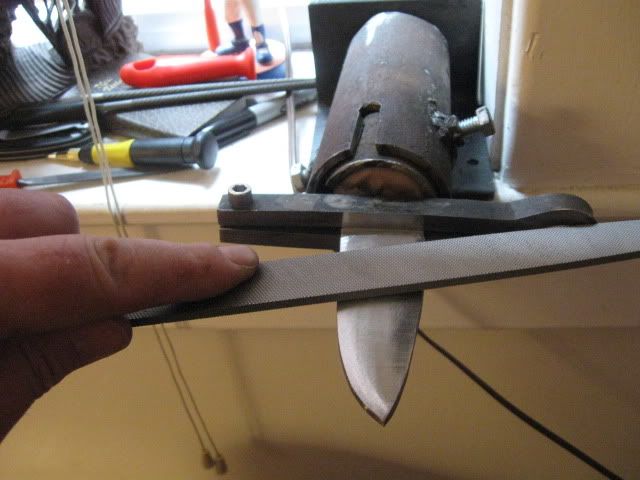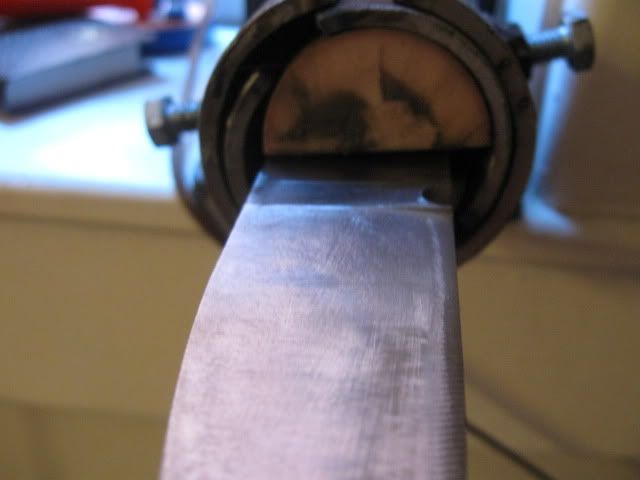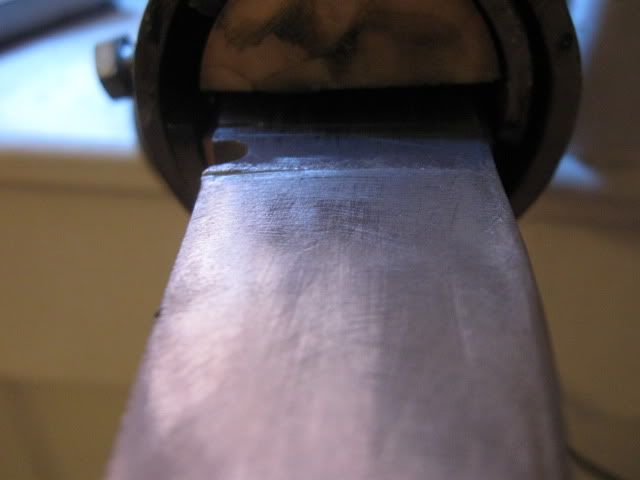K
KB1SYV
Guest
Jeffrey,
That's looking real good so far. I don't envy the file work. As you get closer to your desired bevel height, you can draw file if you like. It take a bit of practice to get it right, but it will blend and flaten things out nicely. Make sure to keep your file clean. I'm talking like every pass as you get close to finished so as not to gall your work. Some chalk on the file can help it not to load up with metal filings as much.
I'm interested to see how you progress from here once you get the blade done. Keep up the good work!
--nathan
Nathan,
That was so cool of you to swing on by!!! I have this distinct feeling this thread will last for month's. I am looking forward to your input as I move forward. These guy's that offer their advice have been awesome.
Thanks Again Nathan,
Jeff












